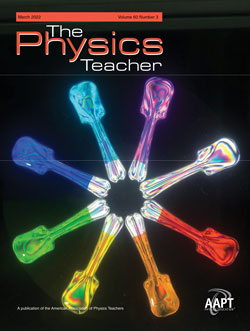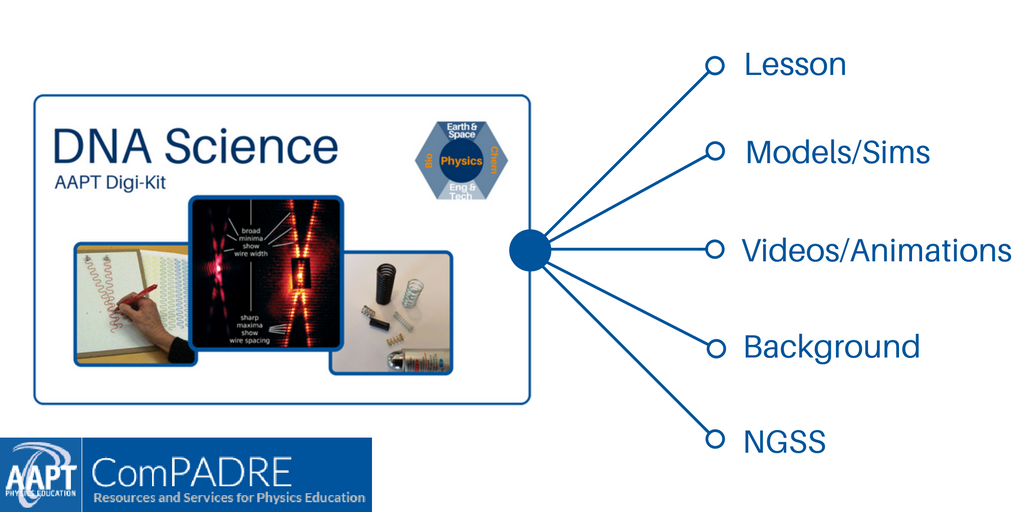
The Physics Teacher
March 2022
Volume 60 Issue 3
Demonstrating Birefringence Using a Smartphone Camera
This month's cover colorfully reveals hidden stresses in plastic spoons via polarized light from a computer screen. See details on in “Demonstrating Birefringence Using a Smartphone Camera” by Chokchai Puttharugsa et al., the latest installment in the “Little Gems” column, edited by Chris Chiaverina.
Columns
And the Survey Says..., Astronotes, Figuring Physics, For the New Teacher, Just Physics, iPhysicsLabs, Little Gems, Physics Challenge for Teachers and Students, Fermi Questions, Talkin' Physics, Technology In The Classroom, Tricks of the Trade, Visual Physics, and Websights.
LETTERS TO THE EDITOR
Peter Froehle remembered by Charles H. Miller. DOI: 10.1119/5.0085665
More astronauts who went to the Moon by Frank Daniel Lock. DOI: 10.1119/5.0084463
Response to the paper “Leaving the ‘One True Path’: Teaching physics without single correct answers” by Eugenia Etkina and Gorazd Planinšič. DOI: 10.1119/5.0077864
An estimation of an article by Terrence Toepker. DOI: 10.1119/5.0073866
PAPERS
Share It, Don’t Split It: Can Equitable Group Work Improve Student Outcomes? by Danny Doucette and Chandralekha Singh. DOI: 10.1119/5.0033824
Would Usain Bolt Beat the Dinosaur Dilophosaurus by Wetherilli in a 100-Meter Race by Scott A. Lee. DOI: 10.1119/5.0041057
Infusing Equity, Diversity, and Inclusion Throughout Our Physics Curriculum: (Re)defining What It Means to Be a Physicist by Martha-Elizabeth Baylor, Jessica R. Hoehn and Noah Finkelstein. DOI: 10.1119/5.0032998
Jumping Off a Merry-Go-Round by Terrence Toepker. DOI: 10.1119/5.0023995
Providing Context for Identifying Effective Introductory Mechanics Courses by Jayson M. Nissen, Ian Her Many Horses, Ben Van Dusen, Manher Jariwala and Eleanor Close. DOI: 10.1119/5.0023763
A Two-Tiered Strategy to Help Students Assess Their Answers to Physics Problems by Jeffrey Marx. DOI: 10.1119/10.0009685
Teaching Quantum Computing to High School Students by Ciaran Hughes, Joshua Isaacson, Jessica Turner, Anastasia Perry and Ranbel Sun. DOI: 10.1119/10.0009686
Using “Limits to Growth” Modeling Software in an Environmental Physical Science Lab by Hauke Busch. DOI: 10.1119/5.0028078
An Inquiry Approach to Effective Use of Instrumentation: An Example from RC Circuits by G. Harvey, M. Gilday and T. J. Kelly. DOI: 10.1119/10.0009687
A Skateboarding Experiential Learning Activity for Introductory Physics by Liang Zeng, Guang Zeng, Oscar Guerrero and George Garcia. DOI: 10.1119/10.0009688
Measuring the Magnetic Field Vector of Earth by Leonid Minkin and Daniel Sikes. DOI: 10.1119/10.0009689
Exploring Historical Scientific Instruments by Using Mobile Media Devices by Aurelio Agliolo Gallitto, Onofrio Rosario Battaglia, Giuseppe Cavallaro, Giuseppe Lazzara, Lorenzo Lisuzzo and Claudio Fazio. DOI: 10.1119/5.0032111
Demonstrating Mechanical Beats on Phosphorescent Foil in Real Time by Panagiotis Lazos, Anastasios Nezis and Nikolaos Kyriazopoulos. DOI: 10.1119/10.0009690
Understanding Aristotle’s Wheel Paradox from the Viewpoint of Motion Decomposition by Huiling Xu, Xun-Wang Yan and Yanyun Wang. DOI: 10.1119/5.0055440
A Single Photo for Calibration and Measurement: A Low-Cost Spectrometry Setup by J. Pfaender, L.M. Gratton, T. Rosi, P. Onorato and M. Malgieri. DOI: 10.1119/10.0009691
Comment on “Tilting Motion and the Moment of Inertia of the Smartphone” by Peter F. Hinrichsen. DOI: 10.1119/5.0061475
Looking Up: Observational Astronomy for Everyone by Michael Noble Farney. DOI: 10.1119/5.0019979
Race and Physics Teaching Collection Resource
Race and Physics Teaching Continued May 2020-January 2021
DNA Science Lesson & Digi-Kit
Inspired by an article from The Physics Teacher, this multidisciplinary lesson and digital resource collection is based on How Rosalind Franklin Discovered the Helical Structure of DNA: Experiments in Diffraction (Braun, Tierney, & Schmitzer, 2011). Click the image to access this resource.


